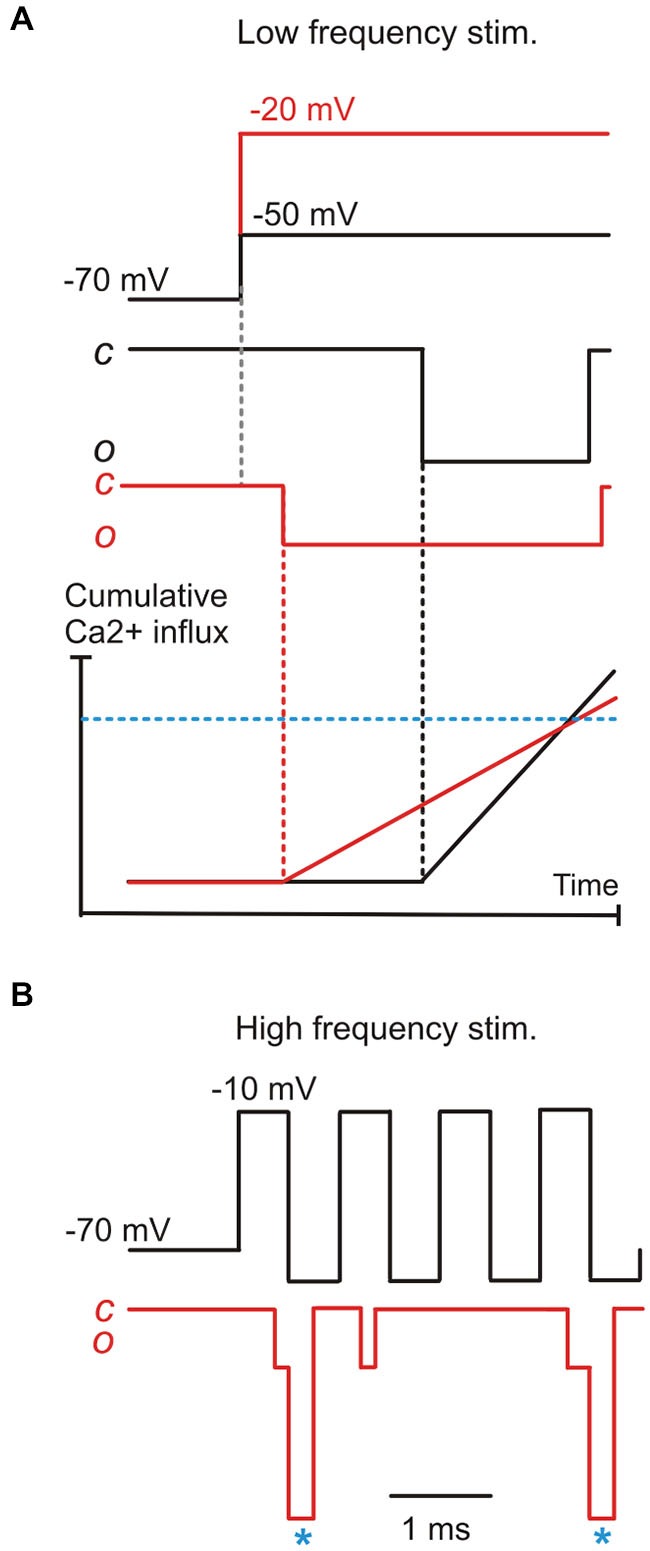Figure 4.

A model for phase-locking based on the properties of elementary Ca2+ currents. (A) the combined effects of the decrease in first latency and the decrease of elementary Ca2+-current amplitude brought about by IHC depolarization, resulting in a hypothetical “threshold” Ca2+ concentration for exocytotic Ca2+-sensor saturation (blue horizontal dashed line) being reached with similar timing as for a lower depolarization. This model would only work if vesicle release is governed by a single Ca2+ channel coupled in a nanodomain to the vesicle/Ca2+ sensor. (B) During high-frequency stimuli (e.g., 1 KHz), signal transmission likely depends upon elementary tail current (asterisks), particularly for high-intensity stimuli where the elementary current would be minimized by the smaller ICa driving force.
